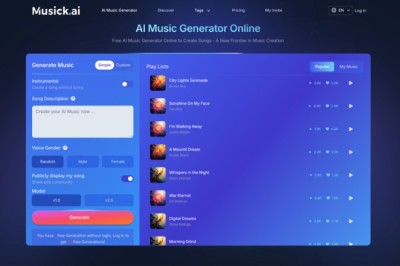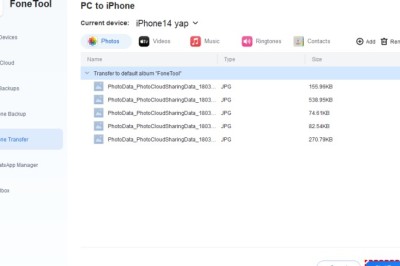views
As a blogger, you're probably wondering how to start a successful blog in 2022. Good news: It's easier than ever! You no longer have to worry about getting your blog ranked on Google or finding readers. In this post, we'll walk through how to set up and run your own successful blog from scratch. We'll cover everything from deciding on a niche and choosing the right name for your site, all the way through social media promotion and SEO. By the end of this guide, you'll be ready to start writing great content for your readers—and hopefully making some money along the way!
1. Decide on a niche.
It’s important to define your niche before you begin blogging. A niche is a group of readers with similar interests, problems or goals that you can serve through your content. For example, if you have an allergy blog and you write about how to manage seasonal allergies or allergen-free recipes for food allergies, then those are niches within the larger allergy category.
You can find niches by asking yourself questions like: Who is my target audience? What problem does my content solve for them? What do I want people to do after reading my articles (buy something from me, sign up for an email list)? How does this fit into the current landscape of blogs online now? These are all good starting points when thinking about what type of niche makes sense for your blog in terms of topic choice and audience reach potential.
2. Choose a blog name.
Choosing a name for your blog is the most important step in starting one. The name of your blog will be what people think of when they hear about it, or what they search for when trying to find you on Google or social media.
- Choose a name that's easy to remember and spell. If someone has trouble remembering how to spell your blog's name, they won't be as likely to come back again in the future. If someone has trouble remembering what your blog is about, they're probably not going to revisit it either!
- Keep it short and simple—not too long and not too short. When considering names for my own blogs in the past, I always tried out various combinations with different numbers of syllables until finding something that felt right; this was easier than picking something at random just because it sounded nice (and often ended up sounding more pretentious than anything else).
3. Setting up your blog.
After you have decided to start a blog and have a good idea about what you're going to write about, it's time to get down to the business of setting up your blog. There are many blogging platforms available that make it easy for anyone with no knowledge of coding or design to set up their own site. You can choose from Blogger, WordPress, Tumblr, Squarespace and more. Whichever platform you choose, there are some basic steps that apply throughout:
- Choose a good domain name (i.e., YourBlogName.com).
- Choose a good hosting service (i.e., HostGator).
- Install WordPress on your hosting account (this is done through cPanel at HostGator). As soon as this is done correctly, all future updates can be done through the dashboard in cPanel rather than by manually downloading files or making modifications yourself through FTP access (more on this later). Once installed correctly with WordPress version 4+, there will also be an option called "Theme" which allows users to change the overall appearance of their site without having any knowledge or experience in HTML/CSS code editing or graphic design programs such as Photoshop or Illustrator.
4. Customize the look and feel of your blog.
Customization is key when it comes to creating a modern, stylish blog. To customize your site, you'll need to choose:
- A theme that matches your personal style and brand.
- A layout that makes content easy to read on multiple devices.
- A color scheme that sets the mood for the whole site and complements the overall design of both web and mobile versions of the site.
- A logo design or image that evokes emotion in readers and represents you as an authority figure in your industry. The logo should be used across all social media channels as well as within posts on every page (or article) of your WordPress website so people recognize it instantly when scrolling through their newsfeeds or visiting certain websites related to yours! Additionally, have fun with fonts too! Many people overlook this but having unique fonts helps differentiate yourself from other bloggers who don't invest time into playing around with typeface options much less using these elements strategically throughout various aspects like headers/headings or even call-to actions such as buttons. Don't forget about domain names either—they're important too because they tell potential visitors what kind content they'll find inside before ever clicking through pages themselves."
5. Write great content that your audience needs.
A blog is a great way to build an audience and a reputation for SEO purposes. However, if your content isn't engaging and helpful, it won't attract any readers. That's why we'll go over how to write great content that will benefit your readers (and yourself).
As with all good writing, start by thinking about who you are writing for: the people who will visit your blog. Is there something they need? Do they have questions they want answered? Think of things that are relevant in their lives. If you're starting out as a blogger with no audience yet, this might mean thinking about what kind of information or help someone needs when they come across your site--and then providing it in a way that makes sense for them as well as being useful for yourself (e., because it might give you ideas for topics for future posts).
Once you've identified those needs or questions from potential readers, think about what piques your own curiosity about them--what interests or fascinates you enough that even if someone doesn't ask these questions directly yet would appreciate knowing more once they do so.
6. Set up a mailing list from the start.
You should set up a mailing list from the very beginning. A mailing list is the easiest way to grow your blog, get feedback, and make money.
To set up your mailing list:
- Sign up for MailChimp or Drip (or another email marketing service that puts you in control of your data) and create a form on your website where readers can subscribe.
- Add social share buttons next to each post so people can easily share it on Facebook and Twitter.
- Create an opt-in offer at the end of every blog post that gives subscribers a reward for their email address like access to bonus content or special deals only available to members of the mailing list.
7. Learn SEO and use it on your blog.
SEO is the process of getting your blog to appear in search engine results. It's important to understand that SEO isn't just a quick fix, but rather a long term strategy. If you want your blog to be found and read by real people, then SEO is for you!
SEO stands for "search engine optimization." In other words, it's how Google and other search engines find your site: they look at what keywords are used on your pages and determine how relevant those terms are with respect to similar sites already indexed by Google (and then rank those sites accordingly). In other words, if someone searches "how do I start a successful blog" and finds this article via Google's algorithm--it means that I've done my job well
8. Use social media to drive traffic to your blog.
Use social media to drive traffic to your blog. Social media is a powerful tool that can be used to build your brand, engage with your audience, and share content. Use social media as a way to increase the presence of your blog in the digital space by creating an organic presence for it on platforms like Facebook, Twitter, Instagram and other sites where you can post updates about upcoming articles or news related to what you write about. By sharing this information with people who follow you on these sites, they will be more likely to come back later when they see new posts from you.
Keep going! It takes time for a blog to become successful.
Why is it so important to keep going? Well, if you want your blog to be successful, then you need to realize that it's going to take time. In most cases, it takes months or even years before you start seeing results. Blogging isn't easy and it's not quick.
It's also important that you continue trying new things on your blog and working hard on them until they work well for your audience. If something doesn't work out as planned, learn from it and try again!
You should also keep learning new things as often as possible in order to grow and improve yourself as a blogger and writer. Use social media platforms such as Facebook groups or YouTube channels where people discuss their experiences with blogging; these are great places where you can learn from others who have already gone through similar struggles when first starting out with their blogs in the past few years (or decades).
Final thoughts:
Blogging is a great way to share your thoughts and ideas with the world. You can reach people from all over the globe, which makes it an ideal platform for just about anything you want to say! If you’re ready to start your own blog, we hope these tips have given you some direction on how best to do so. We wish you all the best in your blogging journey!





















Comments
1 comment
It is very valid information for beginners to start successful blog